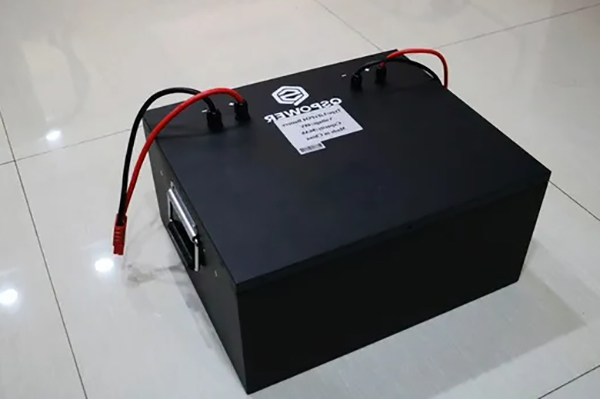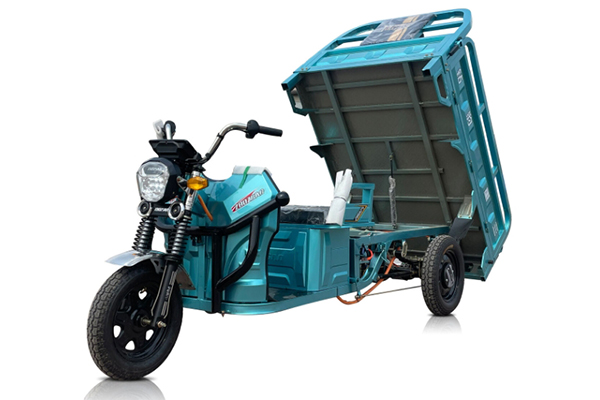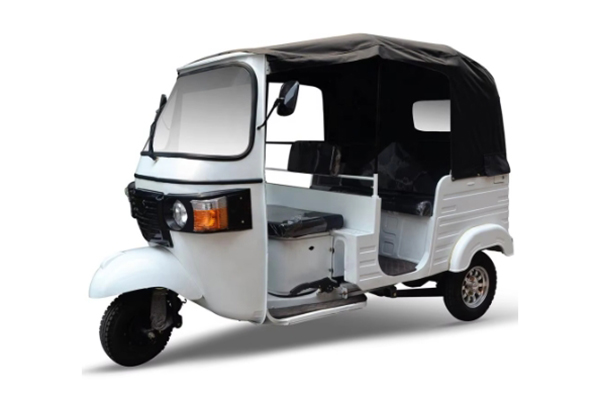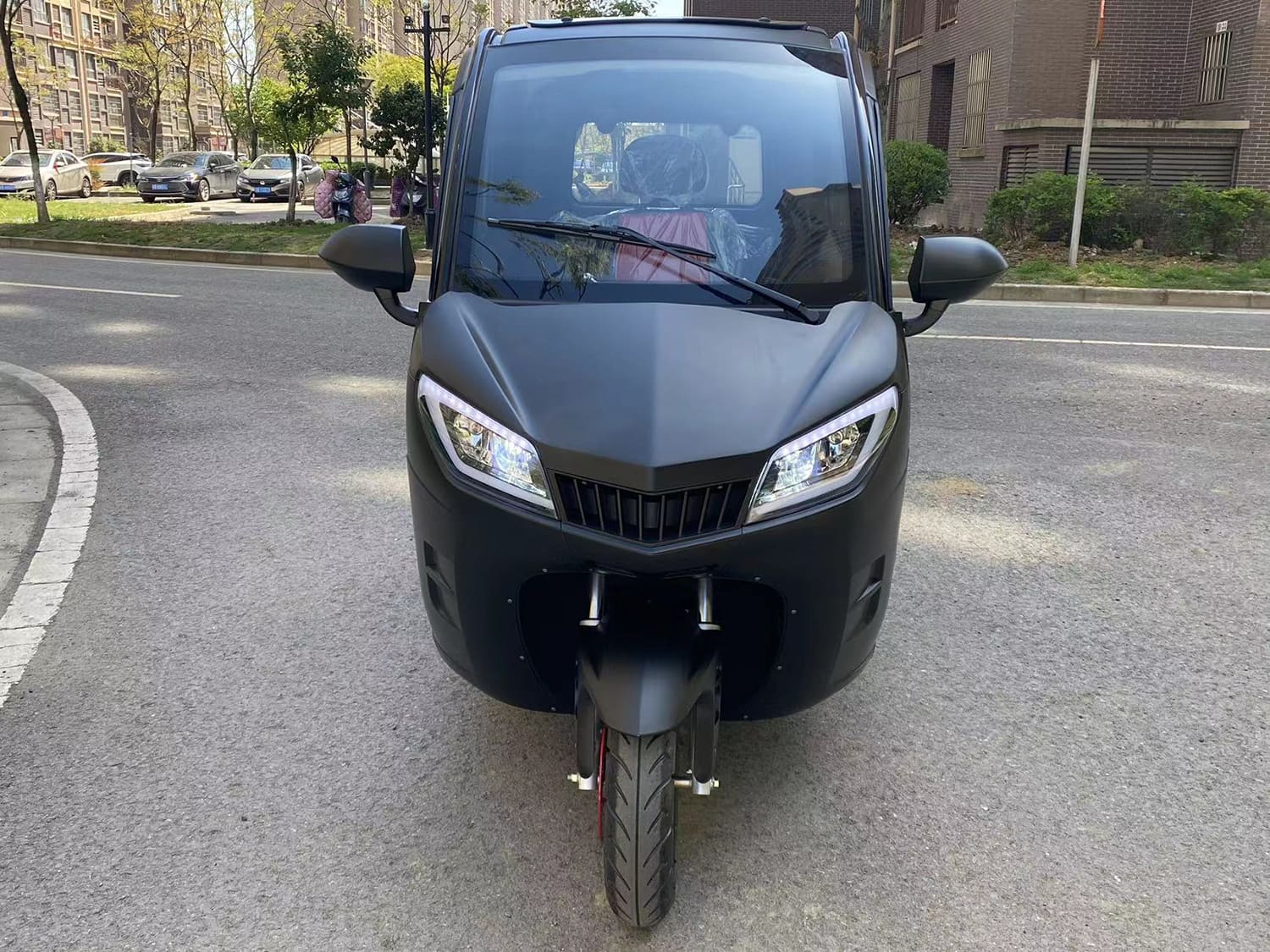Powering the future of urban mobility and logistics often comes down to one crucial component: the battery. For businesses relying on electric tricycles, whether for passenger transport or last-mile delivery, understanding battery technology isn’t just technical—it’s fundamental to operational success and profitability. This guide delves into the world of electric tricycle batteries, focusing specifically on the advantages of modern lithium battery technology. We’ll explore why choosing the right battery is critical, what factors determine performance and lifespan, and how to source reliable, long-lasting power solutions, particularly for fleet managers and business owners like Mark Thompson in the USA who look towards manufacturers in China. If you want to ensure your electric trike fleet runs efficiently and cost-effectively, understanding the heart of your vehicle – its battery – is the first step.
Why is the Battery the Heart of Your Electric Tricycle?
Think of the battery as the engine and fuel tank rolled into one for your electric tricycle. It dictates everything: how far your vehicle can travel on a single charge, how much power the motor can draw for acceleration and load-carrying, and ultimately, the overall operational efficiency and cost-effectiveness of your fleet. A weak or unreliable battery leads to frequent downtime, reduced productivity, and higher replacement costs – significant pain points for any business owner or fleet manager.
Choosing the right battery impacts the daily commute or delivery routes your tricycles can handle. It influences driver satisfaction (no one likes range anxiety!) and impacts the total cost of ownership. A high-quality battery might have a higher upfront price, but its longer lifespan, better performance, and reliability often mean lower costs over time compared to cheaper, less durable options. For businesses purchasing fleets, the collective impact of battery performance on operational capability is enormous. Getting the battery specification right is paramount.
The battery system also integrates with the electric tricycle’s motor and controller. A well-matched system ensures optimal power delivery, smooth acceleration, and efficient energy use. As a factory specializing in electric tricycles, like our operations in Jiangsu, China, we understand this synergy. We carefully select and test battery components to ensure they meet the demands of both electric cargo and passenger applications, providing a stable and powerful ride. The battery isn’t just a part; it’s the core determinant of the vehicle’s capability.
What Are the Different Types of Electric Tricycle Batteries? (Lead-Acid vs. Lithium)
Historically, lead-acid batteries were the standard for many electric vehicles due to their lower initial cost. They are a mature technology, relatively simple, and recyclable. However, they come with significant drawbacks, especially for commercial applications:
- Heavy Weight: Lead-acid batteries are considerably heavier than lithium options, impacting the vehicle’s overall weight, handling, and energy efficiency.
- Lower Energy Density: They store less energy per unit of weight/volume, resulting in shorter range or requiring much larger, heavier battery packs.
- Shorter Lifespan: They typically endure fewer charge-discharge cycles (often 300-500 cycles) before their capacity significantly degrades.
- Longer Charging Times: Recharging a lead-acid battery usually takes longer.
- Maintenance: Some types require regular maintenance (checking electrolyte levels).
- Performance Issues: Voltage can sag under heavy load, affecting performance, and they are more sensitive to deep discharge, which can cause damage.
Lithium batteries, particularly Lithium Iron Phosphate (LiFePO4 batteries), have become the preferred choice for modern electric tricycles. While the initial price is higher, the long-term benefits are substantial:
- Higher Energy Density: They store significantly more energy, allowing for longer range with lighter, smaller battery packs. This is crucial for both passenger comfort and maximizing cargo capacity.
- Longer Lifespan: Lithium batteries can typically handle 1500-3000+ charge cycles, lasting much longer than lead-acid. This means fewer replacements and a lower total cost of ownership.
- Faster Charging: They can often be charged much faster, reducing downtime.
- Lighter Weight: Reduces the overall vehicle weight, improving handling and efficiency.
- Low Maintenance: Generally maintenance-free.
- Stable Performance: Maintain voltage better under load and are less prone to damage from deep discharge.
Here’s a quick comparison:
| Feature | Lead-Acid Battery | Lithium Battery (LiFePO4) |
|---|---|---|
| Energy Density | Lower | Higher energy density |
| Weight | Heavy | Lighter |
| Lifespan (Cycles) | 300-500 | 1500-3000+ |
| Charging Time | Longer | Faster |
| Maintenance | Often Required | Minimal/None |
| Upfront Cost | Lower | Higher |
| Total Cost | Can be higher due to replacements | Often lower due to longevity |
| Performance | Voltage sag under load | More stable |
For businesses focused on reliability, performance, and long-term value, the advantages of lithium batteries make them the clear choice for powering electric tricycle fleets.

Why Choose Lithium Batteries for Your Electric Cargo or Passenger Tricycle Fleet?
For fleet managers like Mark Thompson, the decision to invest in electric tricycles hinges on operational efficiency and return on investment. Lithium batteries directly address key concerns and pain points associated with fleet management. The higher energy density translates directly to longer operational range per charge. This means your delivery vehicles can complete more stops, or your passenger tricycles can operate for longer shifts without needing to recharge, boosting productivity and revenue potential.
The significantly longer lifespan of lithium batteries compared to lead-acid batteries drastically reduces the frequency of battery replacements. While the initial price per battery is higher, the extended service life often results in a lower total cost of ownership. Fewer replacements mean less downtime for maintenance, reduced labor costs, and less hassle managing battery inventory and disposal. This improved durability and reliability are critical for maintaining a consistent and dependable service, whether it’s for cargo delivery tricycle operations or passenger transportation.
Furthermore, the lighter weight of lithium batteries contributes to better vehicle handling and potentially allows for slightly higher payload capacity without exceeding weight limits. Faster charging capabilities mean vehicles spend less time plugged in and more time on the road earning revenue. These operational advantages – longer range, extended lifespan, faster charge, and lower weight – combine to make lithium battery technology a strategically sound investment for any serious electric tricycle fleet operator seeking high-quality, efficient performance. Investing in high-performance lithium power is investing in your business’s bottom line.
How Does Lithium Battery Capacity (Ah) Affect Performance and Range?
Battery capacity, typically measured in Ampere-hours (Ah), is a crucial specification. Think of it like the size of the fuel tank in a traditional vehicle. A higher Ah rating generally means the battery can store more energy, which directly translates to a longer potential range on a single charge. For an electric cargo tricycle making numerous stops or a passenger tricycle covering significant distances daily, maximizing range is often a top priority.
However, capacity isn’t the only factor influencing range. Real-world performance depends on various elements:
- Vehicle Weight: Heavier loads (cargo or passengers) require more energy.
- Terrain: Hills demand more power than flat surfaces.
- Driving Style: Aggressive acceleration and braking consume more battery power.
- Tire Pressure: Underinflated tires increase rolling resistance.
- Weather: Extreme temperatures (both hot and cold) can impact battery efficiency and range.
- Motor Efficiency: The electric motor’s design affects how effectively it converts battery energy into motion.
When selecting a battery, consider the typical operational requirement. A higher Ah battery provides a buffer, ensuring sufficient range even under demanding conditions. For instance, a 60V 50Ah lithium battery will offer substantially more range than a 60V 30Ah battery on the same electric tricycle model. As a manufacturer, we often provide options, allowing customers like Mark to choose the battery capacity that best balances range needs with budget considerations. It’s about finding the sweet spot for your specific application, ensuring your electric fleet can deliver reliably day in and day out.

What Factors Influence Lithium Battery Lifespan and Durability?
The lifespan of a lithium battery is typically measured in charge cycles – the number of times it can be fully charged and discharged before its capacity significantly degrades (usually considered reaching 80% of its original capacity). While LiFePO4 batteries boast impressive cycle life (often 1500-3000+ cycles), several factors influence how long a battery actually lasts in real-world use:
- Depth of Discharge (DoD): Regularly discharging the battery completely (100% DoD) stresses it more than shallower discharges. Avoiding deep discharges can significantly extend lifespan. Many electric tricycle systems have built-in management to prevent overly deep discharge.
- Charging Habits: Consistently charging to 100% and leaving it plugged in can slightly accelerate degradation over time. Similarly, very fast charging generates more heat, which can impact long-term health. Following the manufacturer’s charging recommendations is key.
- Operating Temperatures: Extreme temperatures are detrimental. High heat accelerates internal chemical degradation, while extreme cold can temporarily reduce capacity and make charging difficult. Batteries are designed with thermal management, but avoiding prolonged exposure to extremes helps. Storing vehicles indoors or in shaded areas is beneficial.
- Battery Management System (BMS): This crucial electronic component monitors and manages the battery cell groups. A sophisticated BMS protects against overcharging, over-discharging, overheating, and short circuits, playing a vital role in ensuring both safety and longevity. High-quality batteries always incorporate a robust BMS.
- Physical Shocks and Vibration: While electric tricycles are built to be durable, excessive vibration or impacts can potentially damage battery connections or internal structures over time. Proper mounting and vehicle suspension help mitigate this.
By understanding and managing these factors, fleet operators can maximize the lifespan and durability of their expensive lithium battery investments, ensuring reliable performance for years. Choosing a supplier who uses high-quality cells and integrates advanced BMS technology is fundamental to achieving this long-lasting service.
How Do You Properly Charge and Maintain Lithium Batteries for Electric Tricycles?
Proper charging and basic maintenance are essential for maximizing the lifespan and performance of your lithium batteries. Fortunately, lithium batteries, especially LiFePO4, are relatively low-maintenance compared to lead-acid. Here are key practices:
- Use the Correct Charger: Always use the charger specifically designed for your electric tricycle and battery type (voltage and chemistry). Using an incompatible charger can be dangerous and cause damage.
- Follow Recommended Charging Times: Avoid consistently overcharging. While the BMS offers protection, it’s good practice to unplug the charger once the battery is full or follow the manufacturer’s guidelines. Many modern chargers have auto shut-off features.
- Avoid Extreme Temperatures During Charging: Do not charge a lithium battery if it’s extremely hot (e.g., immediately after heavy use on a hot day) or freezing cold. Let the battery return to a moderate temperature first. Charging below freezing can cause permanent damage.
- Partial Charging is Okay: Unlike older battery technologies, lithium batteries do not suffer from "memory effect." It’s perfectly fine, and often beneficial for lifespan, to perform partial charges rather than always waiting for a full discharge/recharge cycle. Aiming to keep the charge between 20% and 80% for daily use can prolong battery health.
- Storage: If storing the electric tricycle for an extended period (weeks or months), charge the battery to around 50-60%. Store it in a cool, dry place. Avoid storing it fully charged or completely empty. Check the charge level periodically (e.g., every couple of months) and top it up if necessary.
- Keep Connections Clean: Occasionally inspect the battery terminals and charging port for dirt or corrosion. Clean them gently with a dry cloth if needed to ensure a good connection.
- Regular Inspections: Visually inspect the battery casing for any signs of swelling, leaks, or physical damage. If you notice anything unusual, contact your supplier or a professional technician.
Adhering to these simple charging and maintenance practices helps ensure your lithium batteries deliver reliable power and achieve their maximum potential lifespan, protecting your investment and keeping your electric fleet operational.

Are Lithium Batteries Safe for Electric Tricycles, Especially in Delivery Operations?
Safety is a paramount concern, particularly for commercial fleets involved in passenger transportation or cargo delivery. Lithium batteries, especially the Lithium Iron Phosphate (LiFePO4) chemistry commonly used in high-quality electric tricycles, have an excellent safety profile when manufactured correctly and managed by a robust Battery Management System (BMS).
Here’s why LiFePO4 is considered a safe choice:
- Thermal Stability: LiFePO4 batteries are inherently more thermally stable than other lithium-ion chemistries (like those often used in consumer electronics). They are less prone to thermal runaway (overheating) even if subjected to overcharging or physical damage.
- Chemical Stability: The phosphate-based cathode material is structurally stable and doesn’t release oxygen easily, which is a key factor in preventing fires.
- Robust BMS: As mentioned earlier, the BMS is critical. It constantly monitors voltage, current, and temperature of individual cell groups. It prevents overcharging, over-discharging, overheating, and short circuits – conditions that could potentially lead to safety issues. A reliable supplier will always integrate a high-quality BMS.
- Durable Casing: Batteries intended for vehicle use are housed in sturdy casings designed to withstand vibrations and minor impacts encountered during normal operation.
Concerns about lithium battery fires often stem from incidents involving lower-quality batteries, manufacturing defects, misuse (like using the wrong charger), or severe physical damage. Reputable manufacturers, particularly those supplying B2B markets and exporting to regions like the USA and Europe, adhere to strict quality control processes and safety standards during production. When sourced from a trustworthy manufacturer in China and used according to guidelines, LiFePO4 batteries provide a safe and reliable power solution for demanding electric tricycle applications. Choosing a supplier with a proven track record and transparent safety certifications is crucial.
What Should You Look for in a Reliable Electric Tricycle Battery Supplier from China?
For buyers like Mark Thompson sourcing from overseas, particularly China, finding a reliable battery supplier or electric tricycle manufacturer is critical. Price is important, but quality, consistency, and support are paramount for long-term success. Here’s a checklist:
- Specialization and Experience: Look for a supplier or manufacturer (like Allen’s factory) that specializes in electric vehicles and their batteries. Experience in the industry often translates to better product knowledge and quality control.
- Quality Control Processes: Inquire about their quality control measures throughout the manufacturing process, from sourcing raw materials (cell selection) to final battery pack assembly and testing. ISO certifications can be an indicator.
- Battery Management System (BMS) Quality: Ask for details about the BMS they use. A sophisticated BMS is vital for battery safety, performance, and longevity.
- Transparency on Components: A good supplier should be transparent about the type of lithium cells used (e.g., LiFePO4) and potentially their origin or grade.
- Customization and Options: Can they provide batteries with different capacity (Ah) or voltage options to meet your specific fleet requirement? For larger orders, some customization might be possible. Check out options like the EV5 Electric passenger tricycle which might offer flexibility.
- Testing and Certifications: Do their batteries meet relevant international safety and transportation standards (e.g., UN38.3 for shipping)? Ask for test reports or certifications. This is crucial for import regulations in the USA and Europe.
- After-Sales Support and Warranty: What kind of warranty do they offer on the battery? How do they handle warranty claims or technical support? Availability of spare parts or guidance on maintenance is important.
- Communication and Professionalism: Are they responsive, communicative, and professional? Clear communication is essential when dealing with international suppliers. Look for suppliers who understand the needs of B2B customers.
- Factory Visits/Audits: If possible, visiting the factory or arranging a third-party audit can provide valuable insights into their operations and quality standards. Attending exhibitions is another good way to meet suppliers face-to-face.
- References or Case Studies: Can they provide references from other international customers, perhaps in the USA or Europe?
Choosing the right supplier is as important as choosing the right battery technology. A partnership with a reliable manufacturer ensures you receive consistent quality and support, mitigating risks associated with international sourcing.
Understanding Voltage and Compatibility: Ensuring the Right Battery for Your Electric Tricycle Model
Voltage (V) is another critical battery specification. It represents the electrical potential difference that drives the current to the electric motor. The electric tricycle’s motor and controller are designed to operate at a specific nominal voltage (e.g., 48V, 60V, 72V). It is absolutely crucial that the battery voltage matches the vehicle’s system requirements.
Using a battery with the wrong voltage can lead to:
- Damage: A higher voltage battery than specified can permanently damage the controller, motor, or other electrical components.
- Malfunction: A lower voltage battery might not provide enough power for the system to operate correctly, leading to poor performance or complete failure to run.
- Safety Risks: Mismatched voltages can potentially create unsafe operating conditions.
Compatibility goes beyond just voltage. The physical dimensions and connector types of the battery must also match the electric tricycle’s design. When ordering replacement batteries or specifying batteries for a new fleet, always confirm:
- Nominal Voltage (V): Must match the electric tricycle’s system (motor/controller).
- Capacity (Ah): Choose based on desired range and operational needs.
- Chemistry: Specify LiFePO4 for optimal safety, lifespan, and performance.
- Dimensions: Ensure the battery pack fits correctly in the designated compartment.
- Connectors: Verify that the power output and charging connectors are compatible with the vehicle.
Working directly with the electric tricycle manufacturer or a knowledgeable supplier is the best way to ensure compatibility. They can provide the correct battery specifications for each model, whether it’s an Electric cargo tricycle HJ20 or a different passenger model. Never attempt to force fit or modify batteries or connectors if they don’t match perfectly.
Can Lithium Batteries Handle Different Climates and Conditions?
A key concern for fleet operators like Mark, whose vehicles might operate across diverse regions of the USA, is how batteries perform in varying weather conditions. Lithium batteries (LiFePO4) generally offer better performance across a wider temperature range than lead-acid batteries, but they are not immune to extreme temperatures.
- Hot Weather: Extreme heat is the primary enemy of battery lifespan. High ambient temperatures accelerate the internal chemical degradation processes, leading to faster capacity loss over time. While the BMS provides thermal protection against immediate overheating during operation or charging, prolonged exposure to hot climates will inevitably shorten the overall service life compared to operation in moderate temperatures. Good ventilation around the battery compartment and avoiding parking in direct sun for extended periods can help mitigate this.
- Cold Weather: Extreme cold primarily affects performance and charging. Low temperatures increase the internal resistance of the battery, temporarily reducing its available capacity (meaning shorter range) and power output (less acceleration). Charging a lithium battery below freezing (0°C or 32°F) can cause permanent damage (lithium plating). High-quality BMS systems often include cold temperature protection that prevents charging until the battery warms up. Some electric tricycles designed for colder climates may incorporate battery heating systems.
For operations spanning diverse climates, it’s important to factor in these temperature effects. In hot climates, expect potentially shorter battery lifespan. In cold climates, anticipate reduced range during winter months and ensure charging occurs in environments above freezing. Reputable manufacturers design their battery systems with these factors in mind, incorporating appropriate thermal management features. Discussing your specific climate requirements with your supplier in China can help ensure the batteries are designed appropriately for your target market.

What Basic Info and Product Description Should I Look For When Sourcing Batteries?
When evaluating electric tricycle batteries from a supplier, especially for B2B purchasing, you need clear and detailed information. Look beyond just the marketing language and focus on the technical specifications. Key basic info and product description details include:
- Battery Chemistry: Clearly stated (e.g., Lithium Iron Phosphate, LiFePO4).
- Nominal Voltage (V): Essential for compatibility.
- Capacity (Ah): Indicates energy storage / potential range.
- Energy (Wh or kWh): Sometimes listed (Voltage x Ah = Watt-hours), gives a direct measure of total energy.
- Cycle Life: The manufacturer’s estimate of charge cycles (specify conditions, e.g., to 80% capacity at a certain DoD).
- Maximum Continuous Discharge Current (A): Indicates the power the battery can consistently deliver.
- Maximum Peak Discharge Current (A): The short burst of power available (important for acceleration).
- Charge Voltage & Current: Recommended charging parameters.
- Operating Temperature Range: For both discharging (use) and charging.
- Dimensions (L x W x H): To ensure physical fit.
- Weight: Important for overall vehicle weight.
- BMS Features: Details on protections included (over-charge, over-discharge, over-current, short circuit, temperature).
- Connectors: Type of power and charging connectors used.
- Certifications: Safety and transport certifications (e.g., CE, UN38.3).
- Warranty: Duration and terms.
Having this detail allows for accurate comparison between different products and suppliers. A reputable supplier should readily provide this information in datasheets or technical specifications. If you need to find details and price, ensure these technical specifications are included alongside the commercial offer. This level of detail empowers buyers like Mark to make informed decisions based on technical merit and suitability for their specific electric motorcycle or tricycle fleet needs, rather than just price alone. Don’t hesitate to ask your potential supplier for comprehensive product description documents.
Key Takeaways for Choosing Electric Tricycle Batteries:
- Heart of the Vehicle: The battery dictates range, performance, and operational cost for your electric tricycles.
- Lithium is King: Lithium batteries (especially LiFePO4) offer significant advantages over lead-acid in terms of energy density, lifespan, weight, and charging speed, making them ideal for commercial fleets.
- Capacity Matters: Higher Ah generally means longer range, but consider real-world factors like load, terrain, and temperature. Choose a capacity that meets your operational requirement.
- Lifespan Factors: Maximize longevity by managing depth of discharge, following proper charging procedures, avoiding extreme temperatures, and relying on a high-quality BMS.
- Safety First: LiFePO4 batteries with robust BMS systems are a safe and reliable choice when sourced from reputable manufacturers.
- Supplier Selection: Choose experienced suppliers from China (or elsewhere) who prioritize quality control, use high-quality components, offer transparency, and provide good support. Look for specialists in electric passenger tricycles and cargo models.
- Compatibility is Crucial: Always ensure the battery voltage, dimensions, and connectors match your specific electric tricycle model.
- Maintenance is Simple: Follow manufacturer guidelines for charging, storage, and basic inspections to keep your lithium batteries healthy.
Investing wisely in the right battery for your electric tricycle fleet is investing in the efficiency, reliability, and profitability of your business operations.
Post time: 04-11-2025




